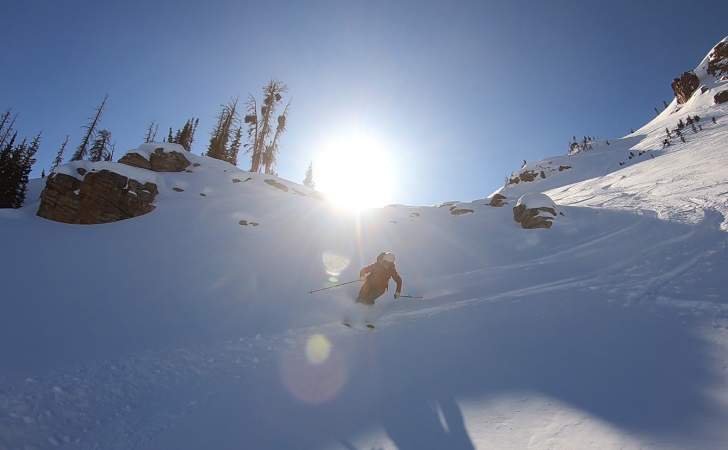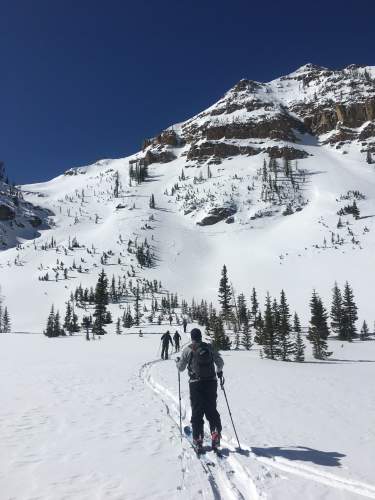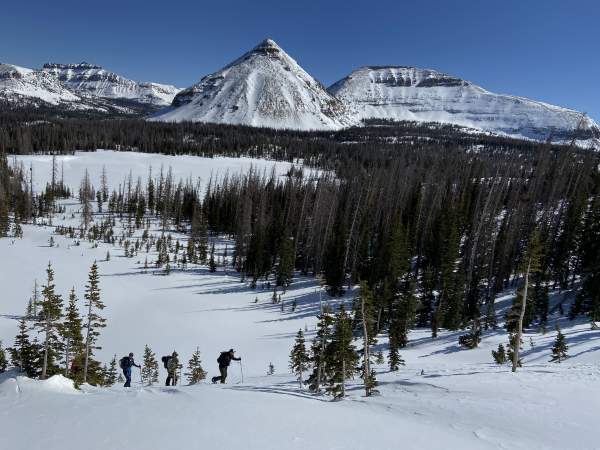A good winter is measured in inches. A great winter is measured in feet, but a Park City pandemic winter is set to be measured in reservations and headcount -- changes that have both locals and visitors straight-lining for the backcountry.

When the resorts closed their doors in March of 2020, a sport that was long enjoyed by only those with extensive knowledge of slope angles and snowpack suddenly welcomed an influx of riders traversing Aspens and Pines looking to enjoy the rest of a season that ended too soon. “We were lucky it was March,” says Shaun Raskin, owner and founder of Inspired Summit Adventures, which specializes in backcountry touring, “In the springtime, we usually have a more stable snowpack, the opportunity for incidents and accidents was much lower given the number of users we saw who’d never been in the backcountry before.” A shift Raskin, and many local guides, are still navigating as the 2020/2021 season fast approaches. “The big conversation all summer with all avalanche professionals, ski guides, mountain guides, alpine guides is how are we’re going to get the word out and protect users from their own excitement, and offer products that help people, and also protect our clients and guide teams.”
Beginning in the Backcountry
With so many uncertainties in the backcountry, how do first time-users or fist time visitors to the area safely enjoy the beauty of the Uinta’s and Wasatch while skipping lift lines and pandemic restrictions? According to Andy Nassetta, Education and Awareness Coordinator with the Utah Avalanche Center, it takes quite a bit more than borrowing a set of skins on a blue-bird day. “It’s not a cheap venture. You need a probe, shovel, avalanche transceiver,” says Nassetta, “We are going to have a lot of folks out there. We gotta be watching out for each other, make sure everyone’s educated, and everyone’s carrying the best pieces of equipment.” But equipment, while necessary, is just a few pieces to the puzzle, “friends and experienced partners, finding someone who’s willing to teach you and share that experience with you,” says Nassetta, is another.

Get a Guide
If you’re someone who’d prefer to dip your tips in the backcountry without first navigating what might feel like an undergraduate degree in avalanche safety (something we recommend if you plan to return to the sport again and again), then finding a guide to take you up your first few times is definitely the best route. Park City is home to several backcountry guide companies, and their expertise could save your life. “It behooves you to get out with professionals,” says Raskin, “somebody to show you the ropes. When you put yourself at risk, you’re putting everyone at risk.”

Raskin, a big mountain skier herself, understands the dangers of having less experienced riders traversing off-piste, potentially triggering an avalanche from above. Yet, even with the risks involved, she wants to make sure people enjoy what Utah’s backcountry has to offer, “If you’re looking to be a powder skier, there’s absolutely a place for you in the backcountry. Traveling in the backcountry is about assessing terrain and knowing when it’s safe to go, and where to go, based on weather conditions and snowpack. You shouldn’t be paralyzed with fear. There is a rhyme [and] reason.”

Get Educated
For those new to the sport or who have never entered the backcountry, Nassetta recommends The Know Before You Go (KBYG) program, a short introduction to life in the backcountry. Which started 16 years ago in response to an avalanche that slid off Mt. Timpanogos, sweeping up 14 and killing three, all unaware of the dangers of hiking and riding in the area given the conditions of the day. The program is now ground zero for anyone entering Utah’s backcountry, “It’s full of recorded presentations, online learning modules, and tons of resources for folks to get their feet wet without spending a bunch of money,” says Nassetta “it’s a good primer.”

If, after KBYG, first tracks are still your goal (and debating whether to lower the safety bar is not), then completing an AIARE Level 1 certification or mentorship program is your next step. Through White Pine Touring, Raskin teaches AIARE level 1 and also conducts a non-certified backcountry mentorship program. “Mentorship looks at both snow science and movement,” says Raskin, “How to skin, how to pack our packs, what to wear, dressing differently than dressing in the resort, how to start identifying avalanche terrain, [and] best practices on the skin track. It helps fill the gaps between a level one or level two course.”

Get Out There
This season will be the season many new riders experience the backcountry’s beauty for the first time. And while local guides and avalanche experts want nothing more than to encourage both skiers and snowboarders to enjoy the beauty of the Wasatch, safety is always their first priority. “We try and empower the community to seek out and be excited with educational opportunities,” says Raskin, who is already feeling the enthusiasm of the approaching season through Inspired Summits, “We’re seeing exceptional booking rates. I can’t even put a percentage to it. We’re selling out weeks of the season already.”
“There aren’t really many other places that have access to snow-covered mountains such as the Wasatch in Salt Lake City,” says Nassetta, “It’s a large metropolitan area next to world-class mountain snow and skiing. [Backcountry] is a flourishing new sport. It’s the cool thing to do, I guess.”
Side Country
Ducking resort rope and skiing closed terrain has long been described as riding side country, a title Scott House, Avalanche Educator and Communications Director with White Pine Touring, says is a myth. “I think it’s important that people understand there is no such thing as ‘side country,’ you’re either skiing in the resort with all the avalanche and safety measure they provide, or you are skiing in the backcountry where you are 100% responsible for your own safety and that of those around you; including first aid, rescue, wayfinding, avalanche condition knowledge/management, etc.”
Skiing backcountry is an umbrella term, a way to discern between controlled resort boundaries, and those to the right, left, or behind maintained runs. But what about when the resort closes? Or before it opens? “I think it’s important people know that when the resort is closed it is effectively a backcountry environment,” says House, “With all the responsibilities that come with recreating in the backcountry.”
If you’re looking to make the backcountry a larger part of your upcoming season, several resources are packed with educational opportunities and hands-on instruction. Along with several guiding companies who facilitate avalanche awareness training to get you both informed and certified.
Here are a few resources we’ve gathered to get you started.

Avalanche Resources
- Salt Lake/Park City Area Avalanche Forecast
- Utah Avalanche Center
- Know Before You Go
- Avalanche.org
- AIARE
